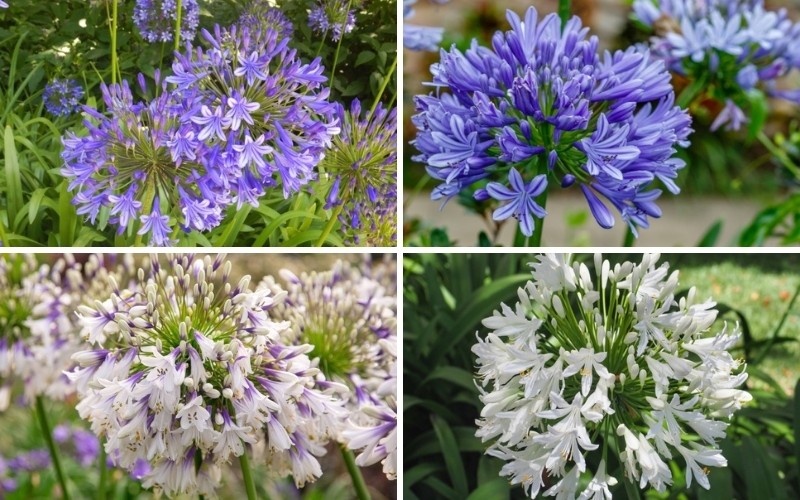
Agapanthus flowers come in many different species and grow all over the world in many environments. They come in small and large shapes, usually produce blue to purple colors, and are surprisingly hardy considering their often diminutive size. And when grown properly, they produce a beautiful look that can fit into just about any soil type and create the kind of garden that makes your home feel as attractive as possible for your needs.
Albus: A White Beauty
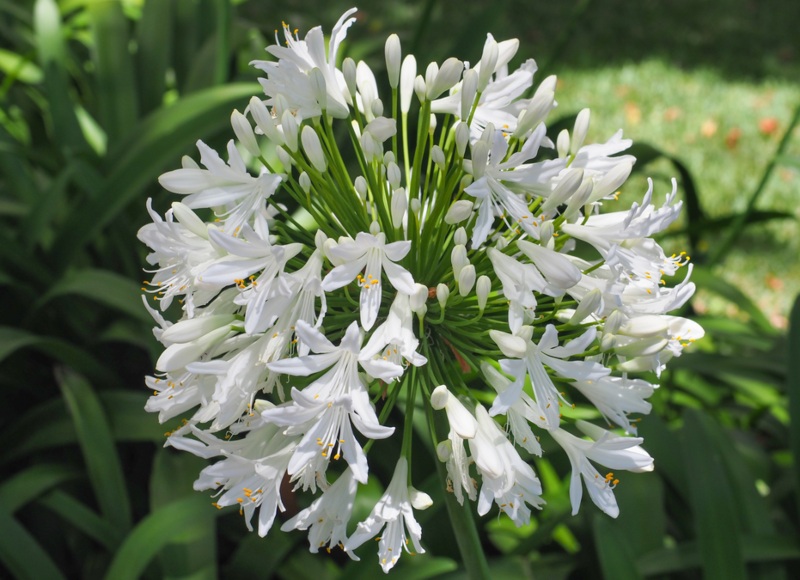
The Albus typically blooms in mid-summer and stays in bloom until later that season. They produce a snow-white look that is very attractive and goes well with many other flowers. Expect a height of about 2-3 inches (60-90 centimeters) and a spread of about 3-4 inches (90-120 centimeters).
Care Tips: This plant has an average water need, so make sure to keep the soil moist without being drenched. Thankfully, it does well in most soil types, including chalk, clay, loam, and sand. It can thrive at any alkalinity level and get full to partial sun to ensure your needs’ best results.
Angela: Purple and Glamorous

The Angela growth produces gorgeous purple, blue, and green colors that look good in various areas. Expect growths of around four feet tall to two feet wide (1.2 meters and 0.75 meters, respectively), so make room in your garden to avoid complications. Expect maximum blooms in July-August.
Care Tips: This hardy plant needs full sun exposure to thrive and can do well in every soil type. As a result, it is a good option for your garden’s more challenging areas, with soil that may not seem suitable to other flowers. When allowed to bloom, you can anticipate bees and other pollinators in your yard.
Blue Yonder: A Blue and Appealing Growth
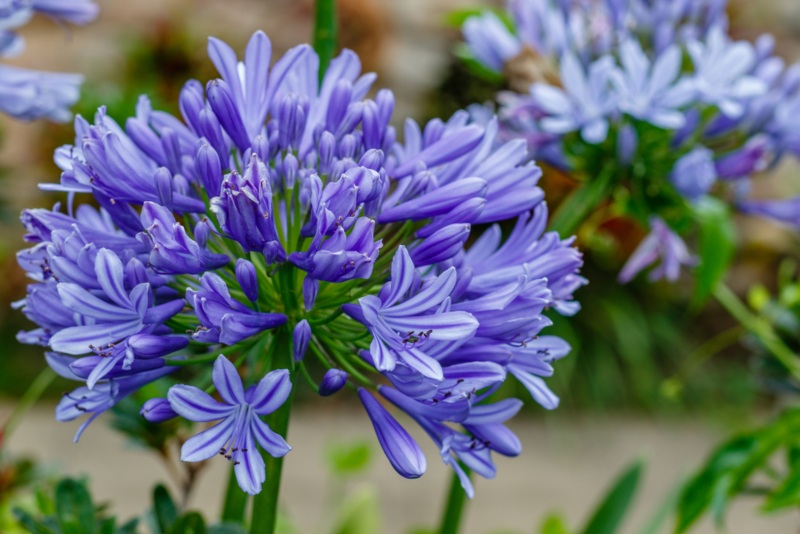
With its appealing clusters of cobalt-blue flowers, this plant mixes well in many color schemes. Typically, it grows to heights similar to that of the Angela, though it grows a little slower. Expect maximum growth in the summer throughout zones 5-10. This plant does not do well in areas with snow.
Care Tips: Typically, this plant does well in well-drained soil, though it does require regular, daily watering in the first growing season. This helps to expand its root system. Next season, you don’t have to water nearly as much. Try to keep them in full sun and keep them reasonably spread from other plants.
Brilliant Blue: Another Dazzling Blue Color
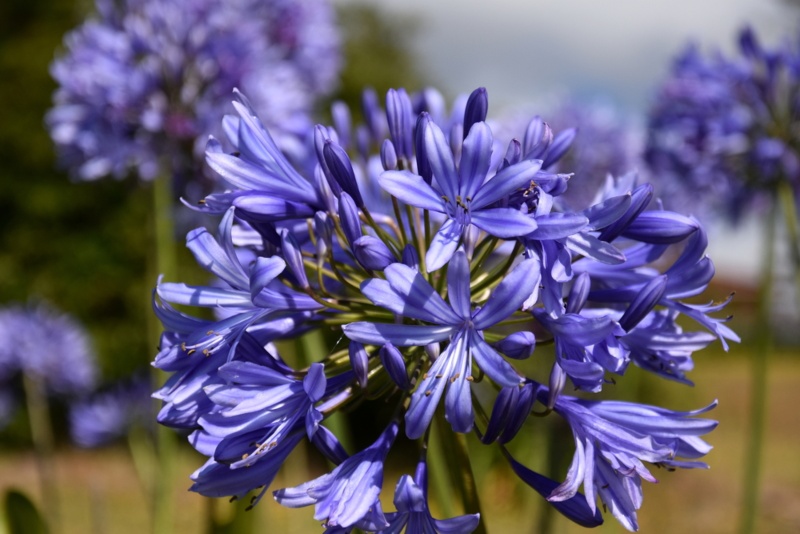
This flower’s deep purple-blue is very striking when in bloom (mid-to-late summer), producing 1-2 inch height and spreads (30-60 centimeters) that make this one of the smaller plants of its species. It typically requires low maintenance and is usually tolerant of most types of pests and diseases.
Care Tips: Provide full to partial sun for this plant, keeping it primarily out of the shade when possible. Water it when the soil is dry but avoid excessive watering to prevent root rot. Plant it in just about any type of soil, and you should get more than 100 flowers every summer with this plant.
Ever Twilight: A White and Purple Marvel
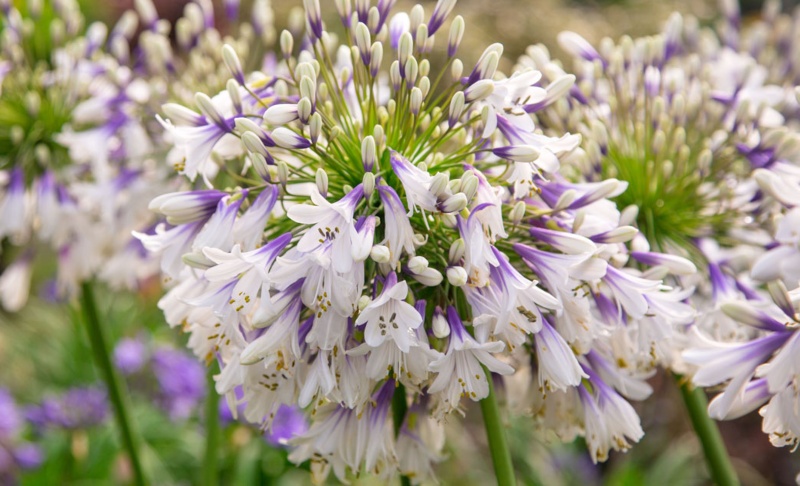
Like other Agapanthus types, this plant has a purple-blue look that also blends in white to produce a very appealing plant. Expect this plant to bloom throughout the summer, peaking in the later months. Very little pruning is needed of this plant, as it is one of the toughest of its species that you can find.
Care Tips: Provide partial sun for this plant to get the best results. Too much sun may be destructive for this plant, to keep it in a spot where it will get a little bit of shade. You rarely need to water this plant, doing so only when the soil is dry. Most soil types should be good enough for this hardy and tough plant.
Little Blue Fountain: A Favorite for Dwarf Enthusiasts
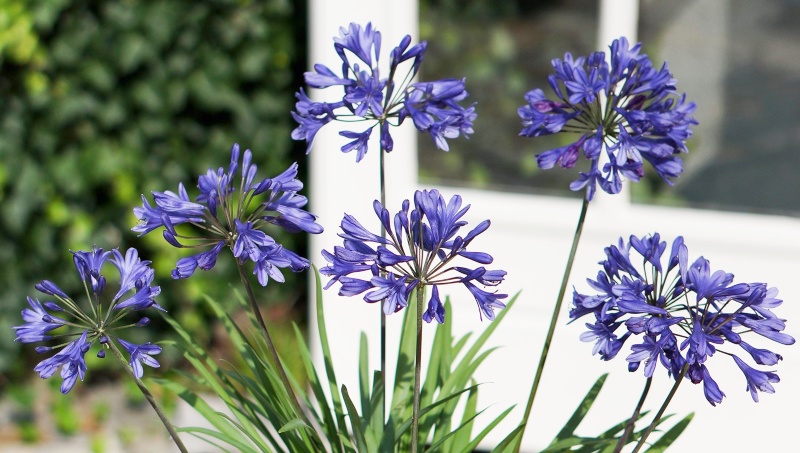
This dwarf Agapanthus is similar to the Ever Twilight in its coloring but is much smaller, with blooms that pop up repeatedly throughout the summer. Anticipate early blooms with this plant (late spring) throughout the rest of the growing season. Expect heights of no more than just over 1.5 feet (0.45 meters).
Care Tips: Don’t plant this flower in your yard unless you live in zones 8-11. It needs a consistently warm temperature to thrive. Plant it in partial sun and provide daily or semi-daily watering to get the best results. Focus it on your garden’s border areas to get the kind of decorative touch you want and deserve.
Loch of Hope: Another Minute Beauty
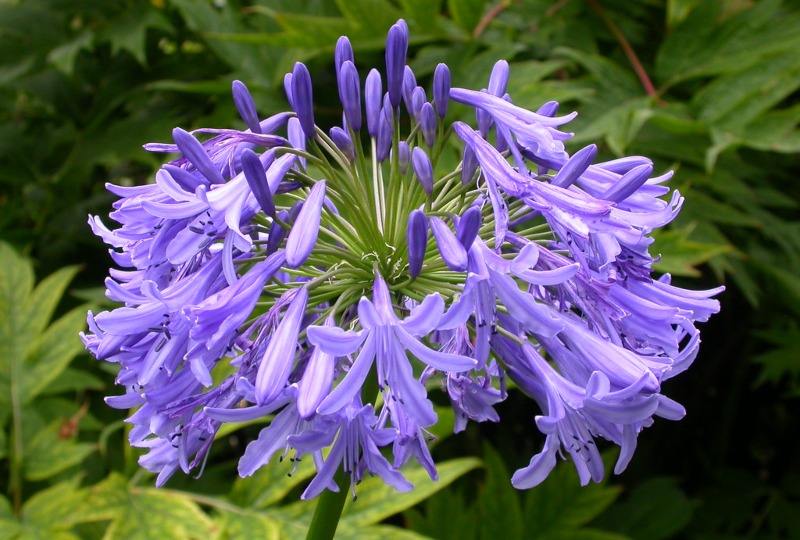
Many Agapanthus flowers are relatively small in stature but surprisingly hardy. For example, this plant never gets more significant than 3-4 inches (90 to 120 centimeters) but thrives in climate zones 6-24 with relative ease. Its light purple and white color are very similar to other Agapanthus flowers, making it a good alternative for rugged areas.
Care Tips: When you grow this plant in the best soil (acid, alkaline, and neutral work well; moist but well-drained) and in partial to full sun, you should get growths in mid-to-late summer. Don’t worry about pruning, as this plant is vigorous and requires almost no maintenance to thrive in most environments.
Queen Mom: A Unique and Decorative Design
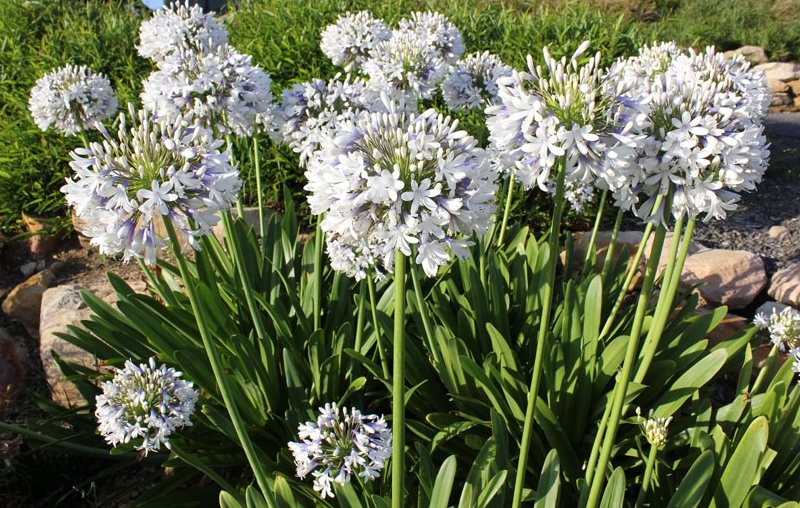
When in bloom during the mid-to-late summer months, the Queen Mum looks a bit like a white-purple dandelion gone to seed and ready to blow away in the wind. Thankfully, the many tiny buds on this plant will not disappear with a gust and remain solid and secure. With sizes that vary up to just under three feet (or under one meter), they provide a beneficial look to many different gardens.
Care Tips: Unlike some Agapanthus, this plant thrives best in full sun, so make sure to keep it away from shade. Often, it plants best in open areas with well-drained and moist soil. Make sure to check the earth daily to ensure that it remains damp but not saturated. This plant produces many different blooms when in season, so you can usually plant them fairly close together without worrying about root overlap.





